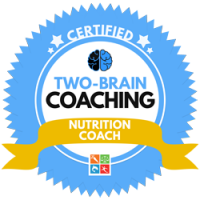Did you know…
The very first sports bra was fashioned out of two jock straps that were sewn together? After growing tired of experience breast pain whilst running, Lisa Lindahl created the first official sports bra, or ‘Jockbra’ as it was called, in 1977. This was a huge step forward for women in sport and exercise, and paved the way for things to come.
Although we’ve come a very long way since Lindahl’s creation, not all sports bras on the market provide sufficient support for their intended purpose. Not to mention that women often aren’t advised as to what to look for in a sports bra or how to find the perfect fit – so it’s no wonder that women still experience pain, discomfort and lack of support during exercise.
What’s the big deal?
A poor supporting or ill-fitted sports bra can not only lead to breast pain, but can also lead to breast ptosis (a.k.a. sag), as well as causing embarrassment and negatively affecting performance. So the big deal? A sports bra – or the wrong one – can be a real barrier to exercise for women, which in turn has a huge knock on effect on overall health.
One survey showed that a huge 72% of women have experienced exercise induced breast pain at some point in their life, and a further survey of women who took part in the 2012 London Marathon in the UK showed that over a third of runners reported breast pain, with 17% admitting that this affected their participation.
In an adult population, 1 in 4 women reported that their breasts were a barrier to physical activity – whether that is because they experienced pain or discomfort, or because they weren’t able to find a correctly fitted bra to support them appropriately, or because they were self conscious of how they looked.
In the adolescent generation, nearly half of over 2000 girls surveyed admitted to avoiding taking part in sports simply because of their breasts.
The affect on performance
Picture yourself running with a sore knee towards the end of a big event. You might adjust your gait, and limp slightly to try and eliviate the pain. If you experience breast discomfort, you would likely make similar compensations; perhaps you won’t breathe as deeply to try and reduce the bounce, or perhaps you’ll crane your neck during burpees to try and reduce the discomfort. If you are regularly making these adjustments, it may not only negatively impact your performance, but these little tweaks could result in pain or injuries in other parts of the body.
One study revealed that when women were exercising with low / inadequate support bras, there were changes to the stride – effectively every stride was a little shorter (approximately 4cm shorter). It was suggested this was simply down to the women not feeling confident and supported enough to stride to the best of their ability, so they reigned their stride in. Over a longer period of time, such as marathon for example, this could have a huge impact on time.
Other changes including restrictive running gait, running with arms much closer to the body, increases in muscular activity in the upper body, and reduction in breathing frequency.
So what are the options?
A huge 85% of women are not wearing the size / appropriate sports bra for their choice of exercise, so time to educate ourselves! What options are out there, and what sizes and sports are these suitable for?
Compression:
Over-the-head, cropped top style. Tissue is compressed against the chest, so the tissue moves as ‘one unit’.
Research suggests these types of bras are better fitted to women with breast sizes A-C.
Encapsulation:
Similar looking to separate cup for each breast, supporting each individually. Keeps breast tissue separate.
Research suggests these types of bras are more appropriate for women with beast sizes D+.
Combination Style:
Two separate cups, with an external layer of material over the top. These can be suitable for any size, but as the name suggests, tend to be more supportive than a compression style.
It doesn’t matter how good a bra is if it isn’t fitted properly. So if you’re in the market for a new sports bra, here at the two big things to consider:
Function
Is the type of bra suitable for the type of activity you’re doing? For running, jumping, and other high intensity and / or high impact activates, a high support bra is key. As a general rule, the higher the neckline, the more supportive the bra. We must remember that the breast tissue extends all the way up to the collarbones and also up into the armpit!
For yoga, pilates and mat work, a simple compression style will likely be enough.
Fit
Follow this 5-step fitting guide to check the fit of a new sports bra before you buy:
1. UNDER-BAND
It may come as a surprise that most of the support should in fact come from the under band, with only a small amount of support coming from the shoulder straps (to reduce pressure on the shoulders). Is the under-band secure? It should be a firm fit. You shouldn’t be able to pull it away from the body more than 2 inches.
2. CUPS
Is the breast tissue completely encased in the cup? There should be no bulging or spilling of the breast tissue around the edges of the cup.
3. UNDERWIRE
Check that this is not pressing against the actual breast tissue. Not all underwired bras will suit all women’s shapes, so if choosing a bra with one, be sure that the wire fits correctly. If it doesn’t, don’t worry! Try a different style of bra.
4. SHOULDER STRAPS
Check they’re firmly fitting, but again – should not be able to pull away more than a couple of inches.
5. GORE
If options for an encapsulation or combination style, the front of the bra (called the “gore’, between the cups) should fit in between the breasts, flat against the body. If it’s being pulled away, it’s likely that you need to go up a cup size.
And finally…Try it out!
We’d never buy a pair of shoes without standing up in them – so why would we buy a bra without trying actually moving in one? Try a couple of jumping jacks or little jumps to give you a feel for how it’s supporting you in your movement.
The summary…
There are so many different styles and types out there, and particularly with strap style, this is ultimately a personal preference depending on comfort, body type, and sport (eg a racer back might be preferable for running, to avoid chaffing around the shoulders).
Ideally, choose a bra that has adjustable shoulder straps to accommodate for different torso length and breast positions. It’s worth noting that sports bras that are not adjustable are more likely to stretch overtime and so will likely become less suitable for high impact activity where bounce is likely to occur.
If there are adjustable straps, realise that the slide adjusters may not align – most of the female population have asymmetrical breast sizes and each strap’s ideal length may not be exactly the same!
What can you do?
Talk about it! Talk to your coach, your friends, your mum and your daughter. Treasure Your Chest offers some great resources for adolescents, so checkout out and spread the word. And when it comes to shopping, try before you buy. There are no official standards, guidelines or regulations around what bras can be called ‘high impact’ or ‘high support’, so be sure to look at the bra carefully and see what design features are in place to back up the branding claims. Choose a bra primarily based on its function and fit, rather than what it says on the label.
Keen to work with us 1-2-1 or in a group? Get in touch to book your free No Sweat Intro now!
Sources: Dr Hazel Wallace BSc The Food Medic (@thefoodmedic), ‘Boobs, breast biomechanics & sports bras’ SE1, Ep3 – The Period of the Period. Podcast.


